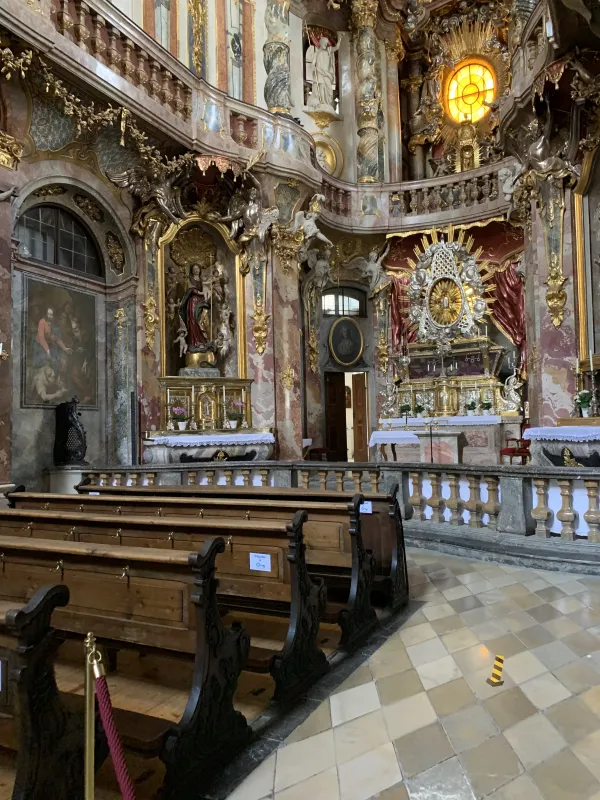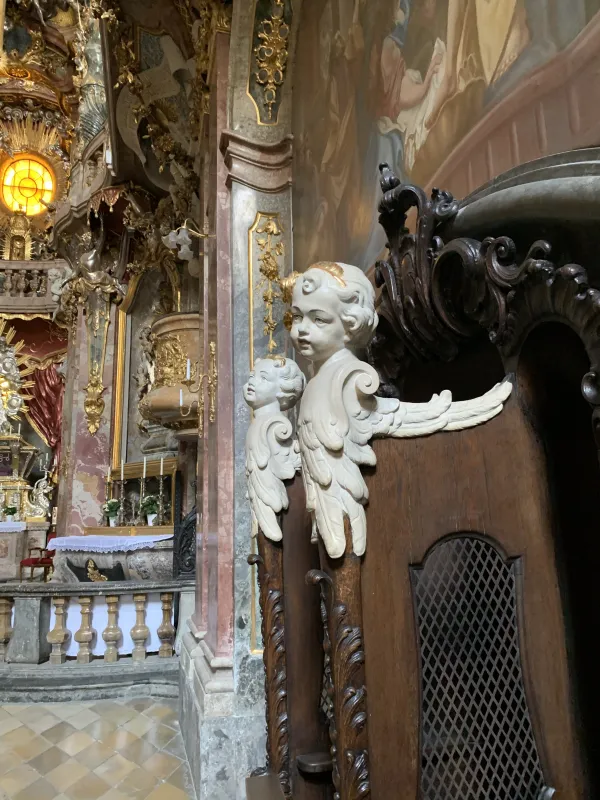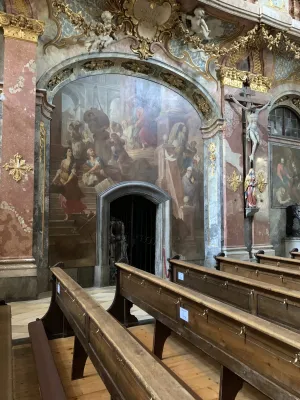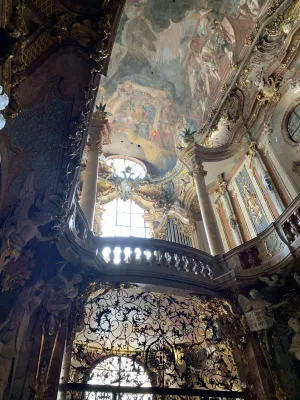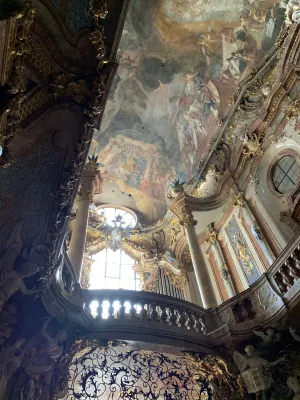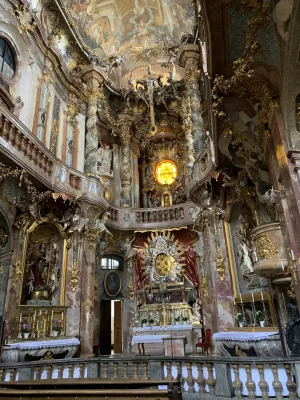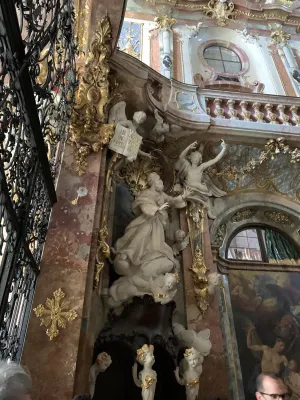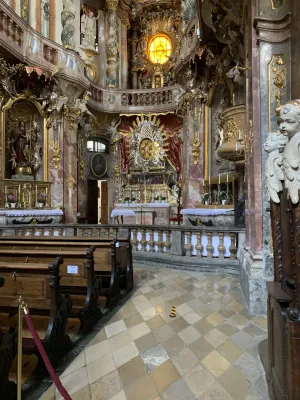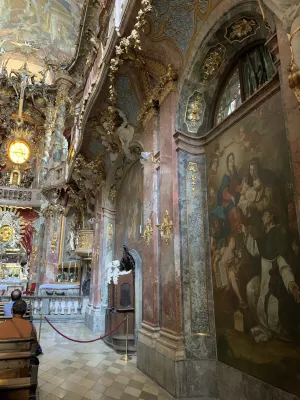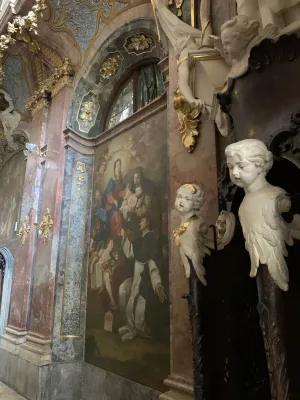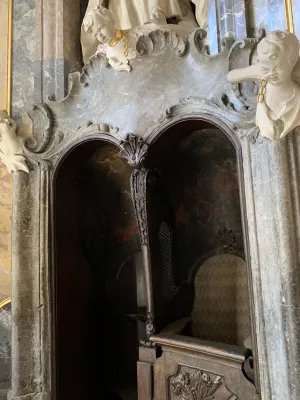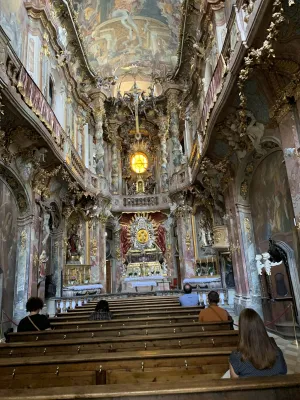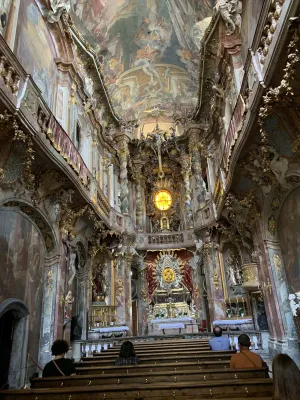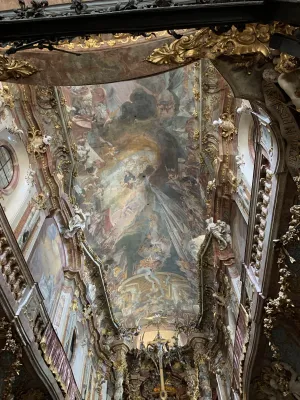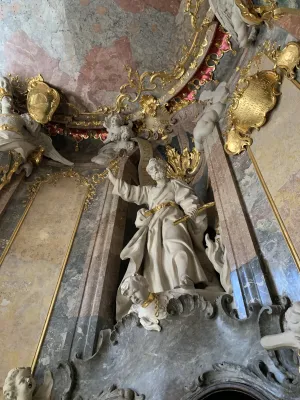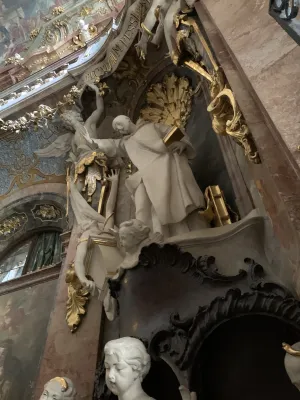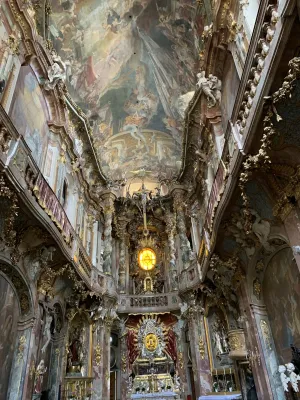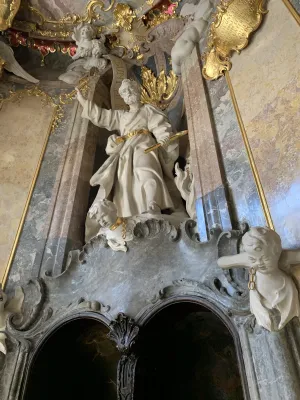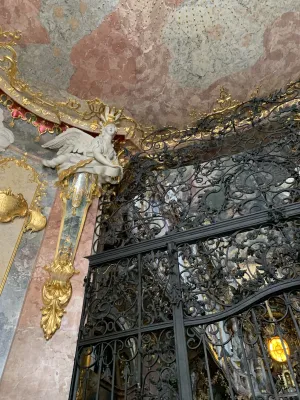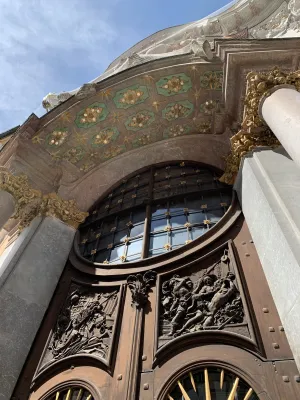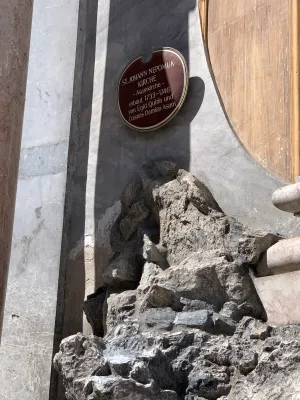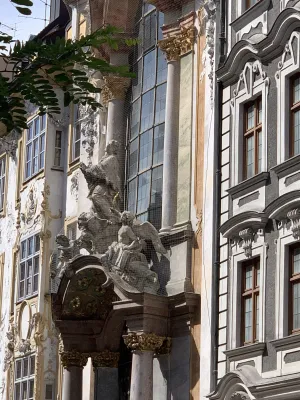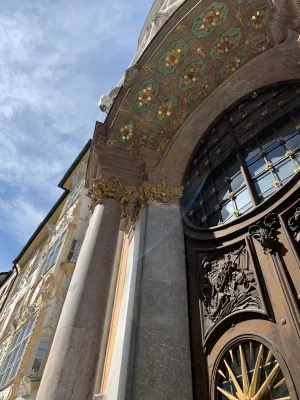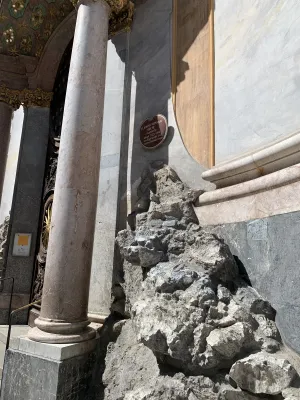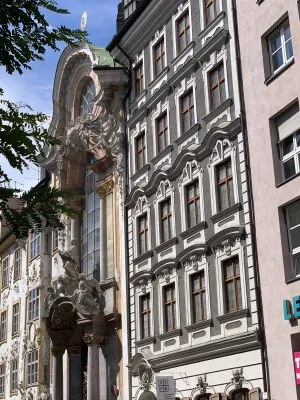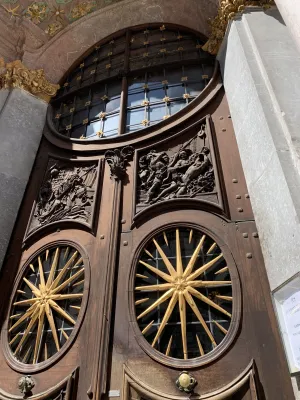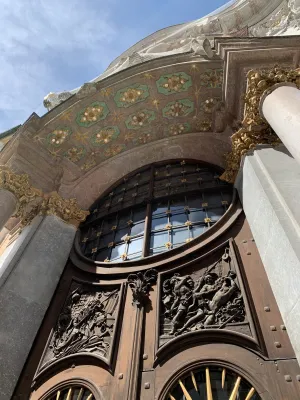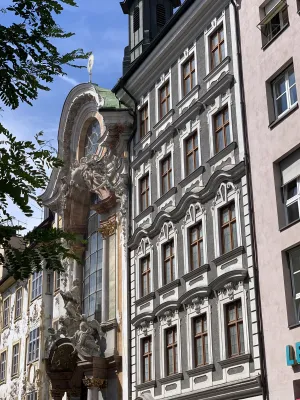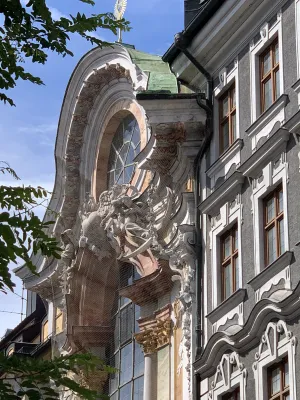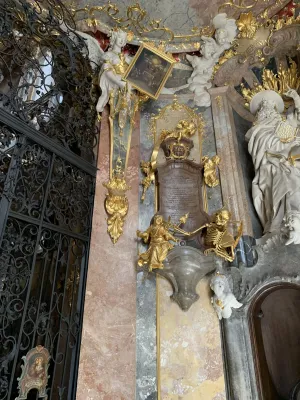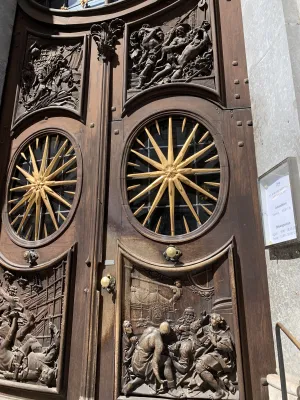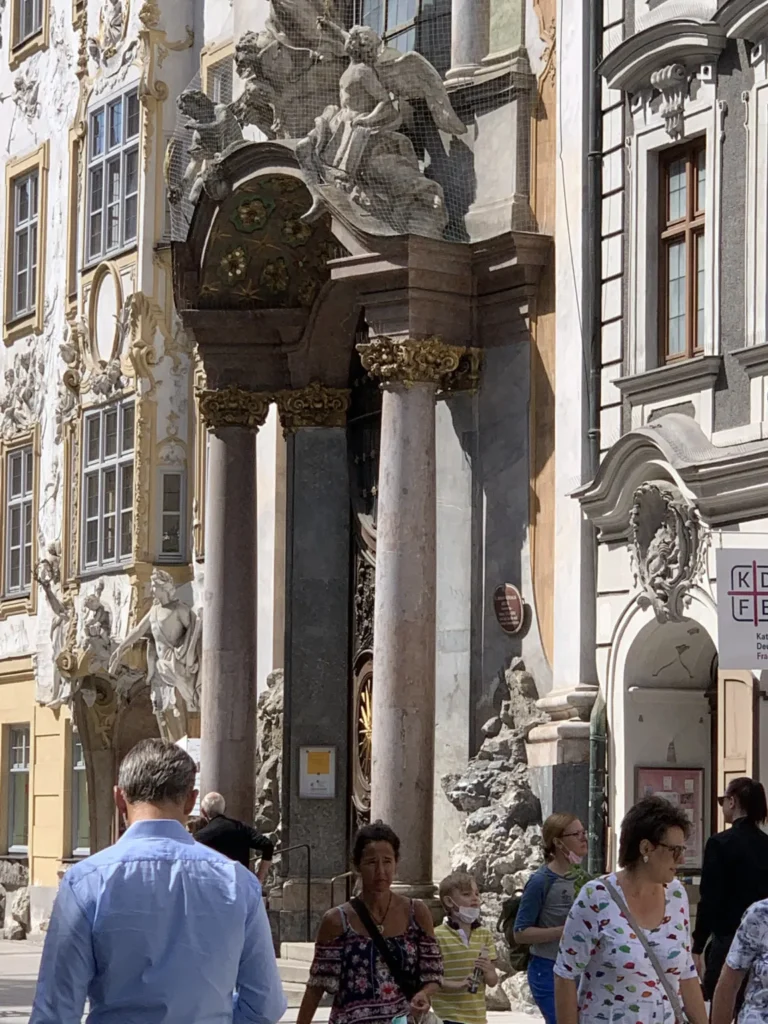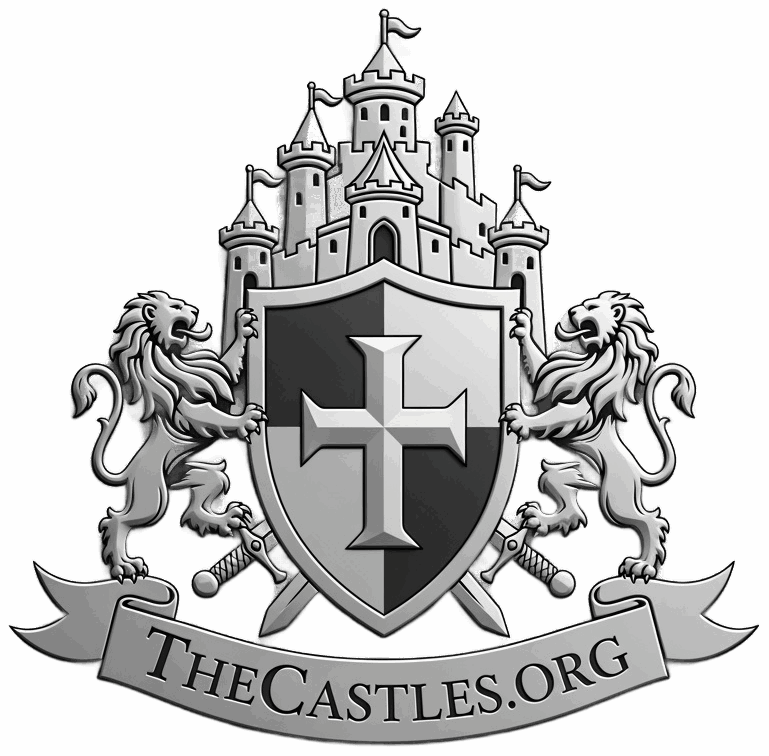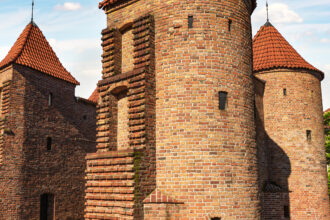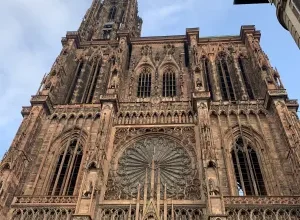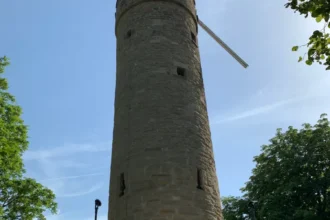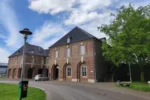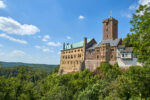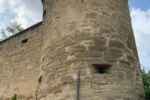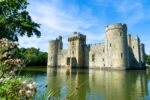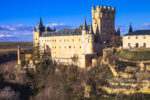Munich’s most beautiful Rococo ensemble, the Asamhaus and the Asamkirche, is located on Sendlinger Straße in the heart of Munich. Like the Asam Church, the Asam House was built by the Asam brothers, the architect and stuccoer Egid Quirin and the painter Cosmas Damian. They acquired the Asam House in 1729 and converted it into their residence with a unique Baroque façade between 1733 and 1734. The figural stucco decoration on the façade served as a showcase for their own work. Right next to the Asamhaus is the Asamkirche, which they built between 1733 and 1746 to ensure their salvation. The church, which is eight meters wide and 22 meters long, is now considered a masterpiece of late Baroque architecture, and the Asam brothers are among the most important artists in Munich, who played a decisive role in shaping the cityscape of Munich and influenced Bavarian Baroque. The Asam Church was consecrated to Saint John of Nepomuk, which is why its official name is St. John of Nepomuk Church. According to legend, the choice of St. Nepomuk is due to the fact that the brothers got into distress during a boat trip on the Danube to Weltenburg Monastery, where they wanted to bring precious sculptures. In their desperation that the ship might capsize, they called on St. Nepomuk, patron saint of bridges, cities, and buildings, to help them. They were indeed spared disaster and subsequently dedicated their church to St. Nepomuk. Although the church was intended as a private chapel, it was opened to the public due to protests from the local population. I must admit that I was overwhelmed when I saw the Asam Church. Two massive rocks grow out of the column capitals at the entrance. Particularly impressive is the statue of St. Nepomuk, framed by angels at the east window. The gable depicts the divine virtues: faith, love, and hope. I entered the interior of the church through an imposing wooden door with four reliefs and two golden star-shaped decorations. I was almost overwhelmed by its numerous stucco decorations and ornaments, which were modeled on Italian churches. This may be because the brothers spent their apprenticeship at the Accademia di San Luca under the Italian master Lorenzo Bernini. The design of this magnificent interior was only possible because it was a private building with no restrictions. Another feast for the eyes is the choir area, whose Trinity figures are indirectly illuminated by hidden windows. The centerpiece of the church is the magnificent high altar, which Egid Quirin Asam could see directly from his bedroom window. It is crowned by God the Father, enthroned on a three-dimensional mercy seat with a triple papal tiara. I found the huge ceiling fresco depicting scenes from the life of St. Nepomuk equally remarkable. The church interior is divided vertically into three areas. The lower part with pews, symbolizing earthly suffering, belongs to the visitors. The middle section, decorated in shades of white and blue, is reserved for the emperor, while the upper section, whose light is directed onto the ceiling fresco, is dedicated to God. The two-story interior with its countless paintings, sculptures, and stucco work is a unique work of art, the inauguration of which in 1746 Cosmas Damian was unable to witness, as he had already passed away. The Asam Church was completely destroyed during World War II, but was subsequently restored in great detail. The wonderful ensemble consisting of the Asam Church and the Asam House with its four-story facade and elaborate stucco work is rightly considered one of the most important buildings in the late Baroque style, which never ceases to inspire me.
